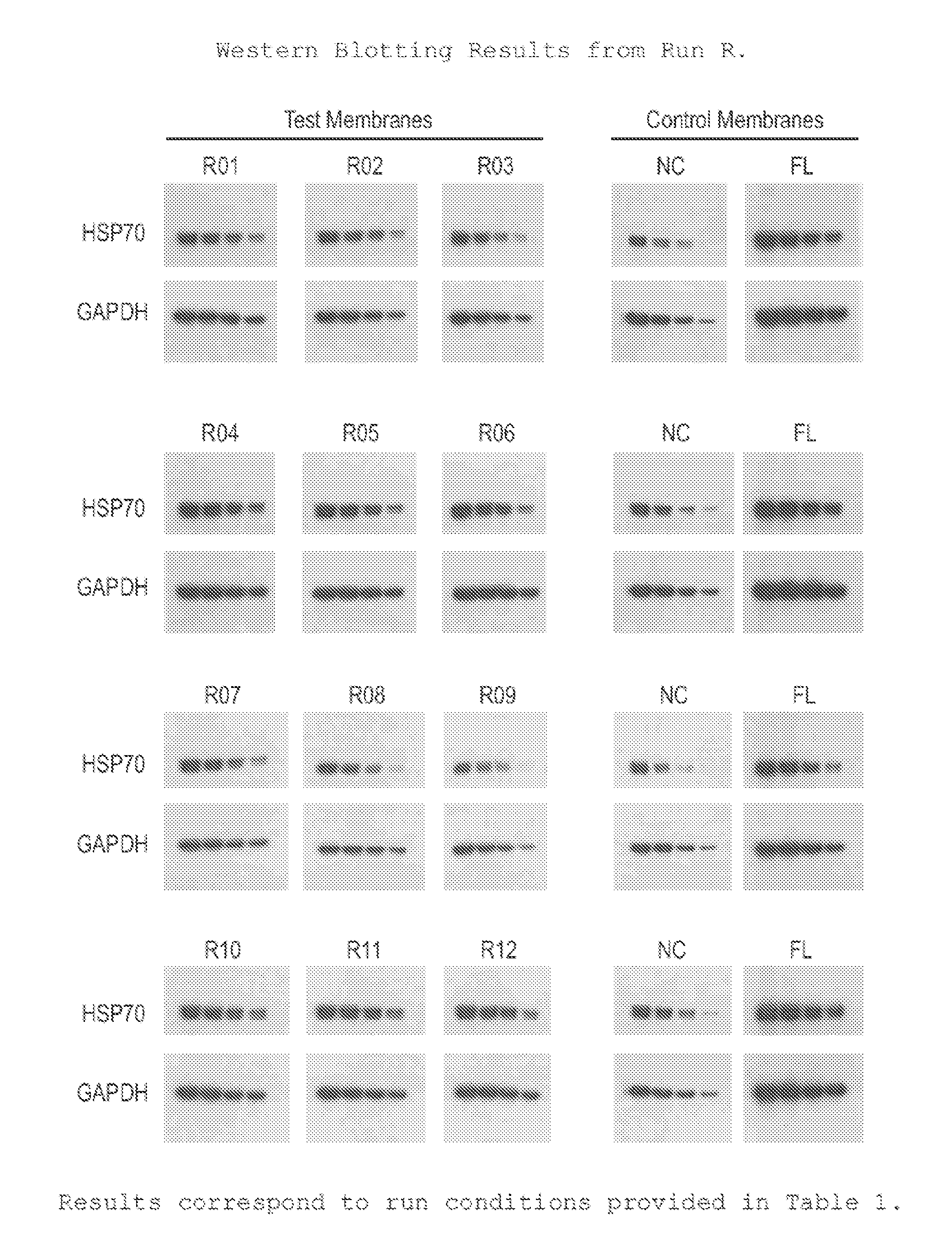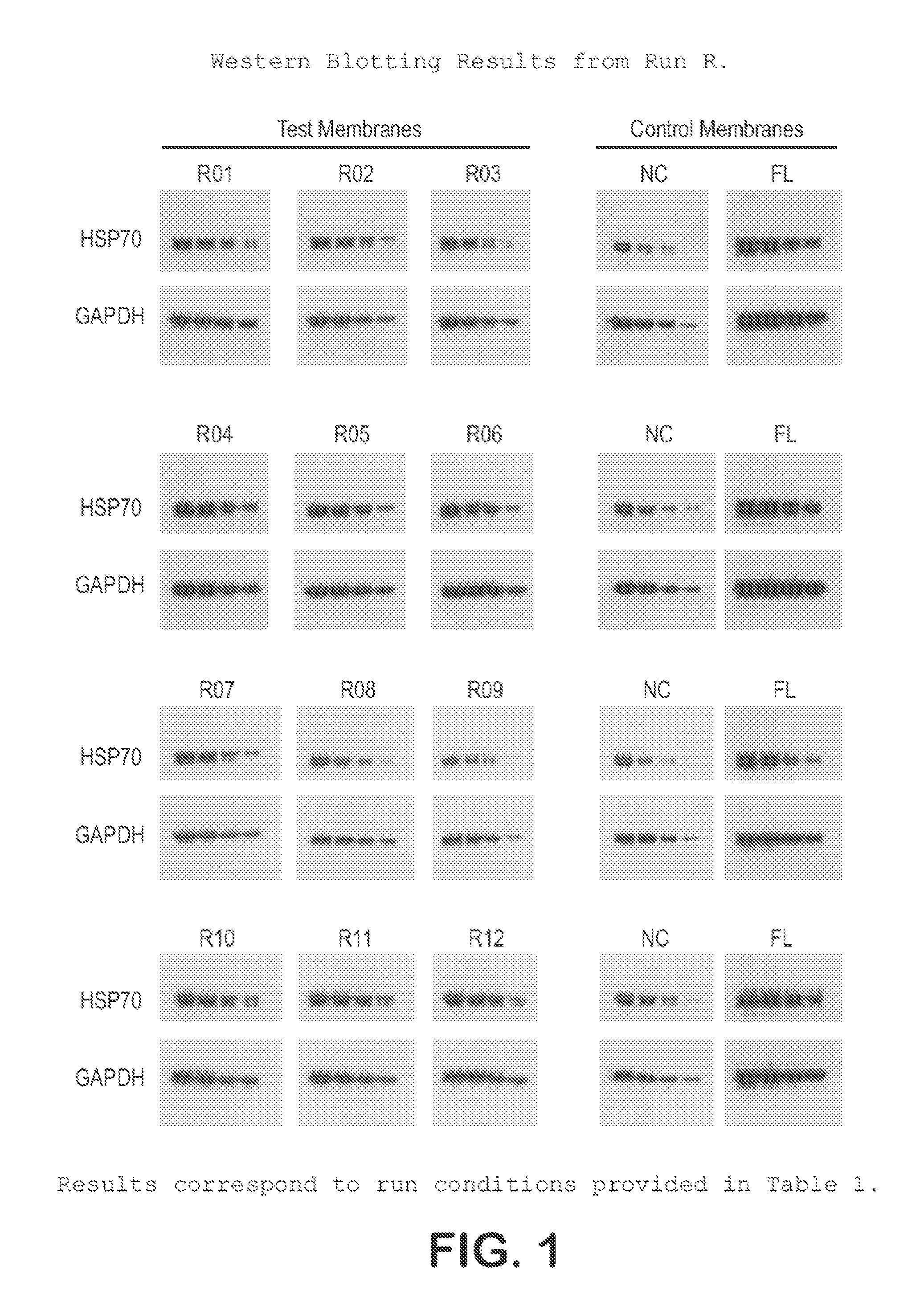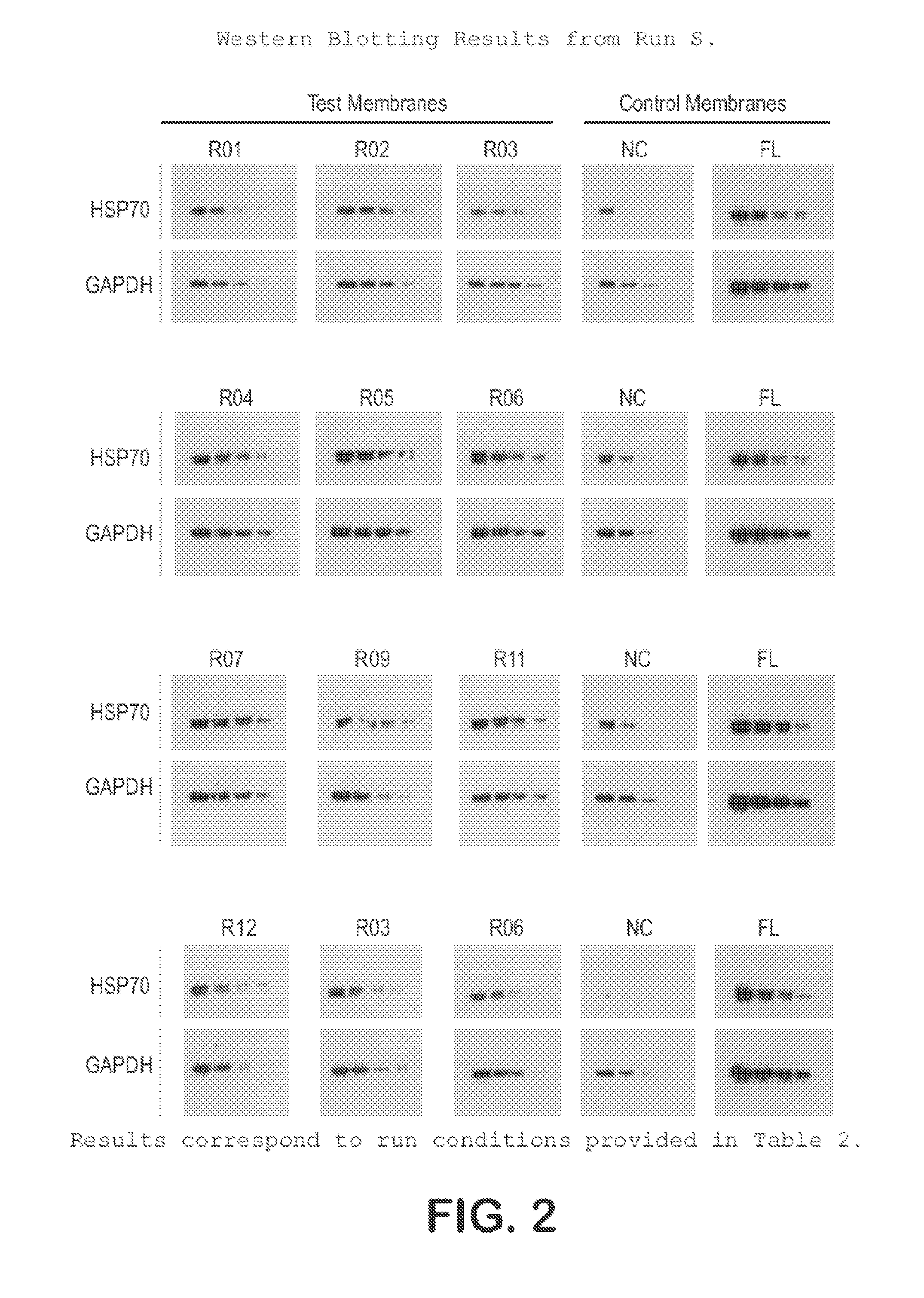Hydrophilic, High Protein Binding, Low Fluorescence, Western Blotting Membrane
a technology of western blotting membrane and hydrophilic protein, which is applied in the direction of liquid/fluent solid measurement, fluid pressure measurement, peptides, etc., can solve the problems of increasing sorption and membrane fouling, reducing membrane permeability and productivity, and reducing the permeability and productivity of membranes, etc., to achieve excellent retention of protein sample spot morphology, low background fluorescence, and high protein binding
- Summary
- Abstract
- Description
- Claims
- Application Information
AI Technical Summary
Benefits of technology
Problems solved by technology
Method used
Image
Examples
example 1
[0029]Commercially available hydrophobic PVDF membrane from Millipore Corporation (IPFL00000) was immersed in methyl alcohol. The membrane was withdrawn and immersed in water with agitation to extract methanol for 1 minute. The membrane was withdrawn and immersed in fresh water for an additional 2-minute interval and then placed in fresh water before immersion in reactant monomer solution. Excess water was drained from the membrane and the membrane was then immersed in monomer reactant solution with gentle agitation for 2 minutes. Membrane was then exposed to UV radiation from both sides in a UV curing process at a line speed of 15 to 25 fpm. Membrane was recovered and placed into a water bath to remove unreacted monomer and non-adhering oligomers and polymer. Samples were dried either in air at room temperature overnight, or in a static forced-air oven between 60° C. and 80° C. for 10 minutes, or on an impingement dryer at 90-110° C. at a line speed of 15 to 25 fpm. Average membran...
example 2
[0031]The procedure of Example 1 was used to treat PVDF membranes having the specifications, treatment conditions and reactant solutions shown in Tables 3A-D, 4A-D, and 5A-D.
TABLE 3AMODIFICATION DATA for Hydrophilic PVDF Western Blotting MembraneMembraneMonomerStartingCastingStarting Membrane PropertiesRollMixMembraneDryerThickPorosityBbl PtFlow TimeNo.Lot#Lot DataTemperature (F.)(um)(%)(psi)(seconds)RUN R - No Mix Ajustment - Footage VS Monomer Mix ConcentrationNANANANANANANANAR01R Mix 1IPFL 071007 T21430011272.89.456.0R02R Mix 1IPFL 071007 T20530011373.09.463.0R03R Mix 1IPFL 071007 T20530011373.09.463.0R04R Mix 1IPFL 071007 T20530011373.09.463.0R05R Mix 1IPFL 071007 T20530011373.09.463.0R06R Mix 1IPFL 071007 T20630011172.49.565.0R07R Mix 1IPFL 071007 T20630011172.49.565.0R08R Mix 1IPFL 071007 T20630011172.49.565.0R09R Mix 1IPFL 071007 T20630011172.49.565.0R10R Mix 1IPFL 071007 T21430011272.89.456.0R11R Mix 1IPFL 071007 T21430011272.89.456.0R12R Mix 1IPFL 071007 T21430011272.89.456...
example 3
[0032]The protocol used for Western blotting and chemiluminescent detection is as follows:[0033]Protein samples are electrophoretically separated using Bis:Tris (4˜12%) midi gradient gel (Invitrogen, WG1402BOX).[0034]Samples are electro-blotted at 45V for 1 hr 15 min using BioRad tank transfer apparatus (Criterion Blotter #165-6024) onto a hydrophilic membrane prepared as in Example 1.[0035]Blots are washed 2× (3 min each) in TBS-T (0.1% Tween)[0036]Blots are blocked for 1 hr at RT in TBS-T with 3% NFM (non-fat milk, Carnation).[0037]Blots are washed 2× (3 min each) in TBS-T (0.1% Tween)[0038]Blots are incubated with primary antibody in TBS-T for 1 hr.[0039]Blots are washed 3× (5 min each) in TBS-T (0.1% Tween)[0040]Blots are incubated with secondary antibody in TBS-T for 1 hr[0041]Blots are washed 4× (5 min each) in TBS-T (0.1% Tween)[0042]Protein bands are visualized using ECL (Millipore Immobilon-HRP) and x-ray film.
[0043]This protocol was used on the samples prepared in Example ...
PUM
| Property | Measurement | Unit |
|---|---|---|
| time | aaaaa | aaaaa |
| pore sizes | aaaaa | aaaaa |
| pore sizes | aaaaa | aaaaa |
Abstract
Description
Claims
Application Information
 Login to View More
Login to View More - R&D Engineer
- R&D Manager
- IP Professional
- Industry Leading Data Capabilities
- Powerful AI technology
- Patent DNA Extraction
Browse by: Latest US Patents, China's latest patents, Technical Efficacy Thesaurus, Application Domain, Technology Topic, Popular Technical Reports.
© 2024 PatSnap. All rights reserved.Legal|Privacy policy|Modern Slavery Act Transparency Statement|Sitemap|About US| Contact US: help@patsnap.com










